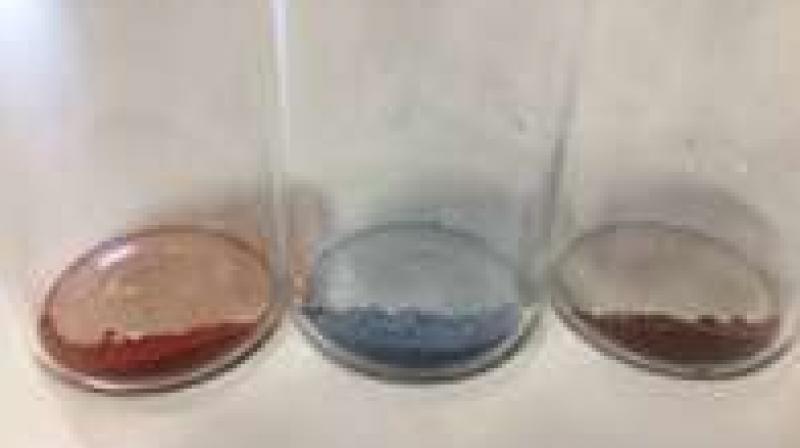New material removes water pollutants using solar energy

Scientists have developed a new non-toxic material that uses solar energy to degrade harmful synthetic dye pollutants which are released at a rate of nearly 300,000 tonnes a year into the world's water.
The novel, non-hazardous photo-catalytic material developed researchers at Swansea University in the UK effectively removes dye pollutants from water, adsorbing more than 90 per cent of the dye and enhancing the rate of dye breakdown by almost ten times using visible light. By heating the reaction mixture at high pressures inside a sealed container, the composite is synthesised by growing ultra-thin "nanowires" of tungsten oxide on the surface of tiny particles of tantalum nitride.
As a result of the incredibly small size of the two material components - both the tantalum nitride and tungsten oxide are typically less than 40 billionths of a metre in diameter - the composite provides a huge surface area for dye capture.
The material then proceeds to break the dye down into smaller, harmless molecules using the energy provided by sunlight, in a process known as "photo-catalytic degradation."
Having removed the harmful dyes, the catalyst may simply be filtered from the cleaned water and reused.
While the photo-catalytic degradation of dyes has been investigated for several decades, it is only relatively recently that researchers have developed materials capable of absorbing the visible part of the solar spectrum – other materials, such as titanium dioxide, are also able to break down dyes using solar energy, but their efficiency is limited as they only absorb higher energy, ultra-violet light.
By making use of a much greater range of the spectrum, the new materials are able to remove pollutants at a far superior rate.
"Now that we've demonstrated the capabilities of our composite, we aim to not just improve on the material further, but to also begin work on scaling up the synthesis for real-world application," said Daniel Jones, from the Energy Safety Research Institute in Swansea University.
"We're also exploring its viability in other areas, such as the photocatalysed splitting of water to generate hydrogen," said Jones. The research was published in the journal Scientific Reports.

